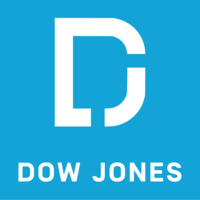World Primed for More Balanced Growth as U.S. Cools, Peers Pick Up Pace — 3rd Update
By Joshua Kirby
Activity in the U.S. private sector slowed in April amid signs of a pickup in other leading economies, a sign that global growth is set to be more broadly balanced this year.
Surveys of purchasing managers released Tuesday pointed to a surprise cooling of activity in the U.S. as the second quarter began, while eurozone activity gained for the second straight month, helped by Germany's return to growth for the first time in nearly a year.
Similar surveys for Japan, India and Australia also pointed to acceleration in growth during April. The U.K. booked a stronger-than-expected rise in activity, suggesting the country is on track for a sustained recovery after slipping into a shallow recession at the end of last year.
The S&P U.S. Composite Purchasing Managers Index, a gauge of activity in the manufacturing and services sectors, fell to 50.9 in April from 52.1 in March. A reading above 50 points to an expansion. By contrast, the eurozone's composite PMI rose to 51.4 in April from 50.3 in March.
While the surveys indicate that the growth gap between the two economies may be narrowing, policy makers at the European Central Bank don't expect it to close soon.
"If we compare the euro area with the U.S., it's clear that our growth is lower," said Luis De Guindos, vice president of the European Central Bank, in an interview published Tuesday. "The leading indicators in Europe point to a modest recovery in the second half of 2024. But we will have a growth rate of less than 1%, below our potential, which is a very low outcome."
The gap in growth helps explain why the U.S. Federal Reserve and the European Central Bank are expected to diverge over the coming months. With inflation easing and the economy still weak, the ECB has signaled it will cut its key interest rate in June, while the Fed is expected to keep its key rate steady until later in the year.
The eurozone's reading was the strongest in 11 months, and indicates a faster rate of expansion than economists expected. That suggests the growth gap between the eurozone and the U.S. may be closing more rapidly than expected.
There were also signs in the U.S. survey of further cooling ahead.
"Further pace may be lost in the coming months, as April saw inflows of new business fall for the first time in six months and firms' future output expectations slipped to a five-month low amid heightened concern about the outlook," said Chris Williamson, chief business economist at S&P Global Market Intelligence.
The surveys suggest that a major point of distinction between the two economies is in their manufacturing sectors. While factory output in the U.S. continues to expand, although at a slower pace, the eurozone survey recorded another deep contraction. By contrast, the survey pointed to a rapid expansion in eurozone services activity.
"The upturn is mostly driven by services for now," Leo Barincou at Oxford Economics wrote in a note to clients. "Meanwhile, the recovery in manufacturing is yet to really take place."
Continued weakness in manufacturing could derail the eurozone's recovery over the rest of the year, said Christoph Weil, an economist at Commerzbank Research.
"We do not yet share the optimism of the majority of economists and the ECB, who are expecting a fairly strong upturn in the course of this year," Weil said in a note. "The situation in the manufacturing sector remains poor."
Alongside a pick-up in current activity, eurozone businesses also set out a sunny view for the months ahead. The gauge of expectations cooled slightly but remained elevated, having reached its highest level last month since 2022's escalation of the Russia-Ukraine conflict.
After stagnating at the end of 2023, the eurozone economy looks set to have recovered in the first months of 2024, aided by a recovery in real incomes and foreign demand. Economists at JP Morgan estimate the eurozone economy grew at an annualized rate of 0.5% in the first quarter from the previous three-month period, and they expect growth to pick up to 0.8% this quarter. But they estimate the U.S. economy grew by 2.3% in the first quarter, and expect it to grow by 1.5% this quarter.
Write to Joshua Kirby at joshua.kirby@wsj.com; @joshualeokirby
(END) Dow Jones Newswires
April 23, 2024 10:46 ET (14:46 GMT)
Copyright (c) 2024 Dow Jones & Company, Inc.-
How the Tokyo Stock Exchange Is Pushing for Better Capital Allocation
-
Magnificent 7 Stocks Earnings Updates: AI Remains the Focus
-
Where We See Opportunities After an Ugly Month for Stocks
-
After Earnings, Is Alphabet Stock a Buy, a Sell, or Fairly Valued?
-
When Will the Fed Start Cutting Interest Rates?
-
What’s the Difference Between the CPI and PCE Indexes?
-
Powell Unfazed By Sticky Inflation, but Rate Cuts Are Far Off
-
After Earnings, Is Microsoft Stock a Buy, a Sell, or Fairly Valued?
-
Amgen Earnings: Obesity Drug Update Is Highly Encouraging
-
What’s Going on With Apple, Tesla, and Alphabet?
-
Apple Earnings: A Weak 2024, but Optimism for 2025
-
4 Utility Stocks to Play the AI Data Center Boom
-
Albemarle Earnings: We Expect Improved Results In the Rest of Year Following Cyclically Low Profits
-
Novo Nordisk Earnings: Raised Fair Value Estimate Still a Contrast to Market Overenthusiasm
-
After Earnings, Is Verizon Stock a Buy, a Sell, or Fairly Valued?
-
Look Inside Berkshire Hathaway’s Portfolio Before Its Annual Meeting

